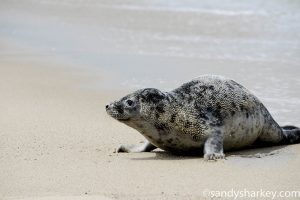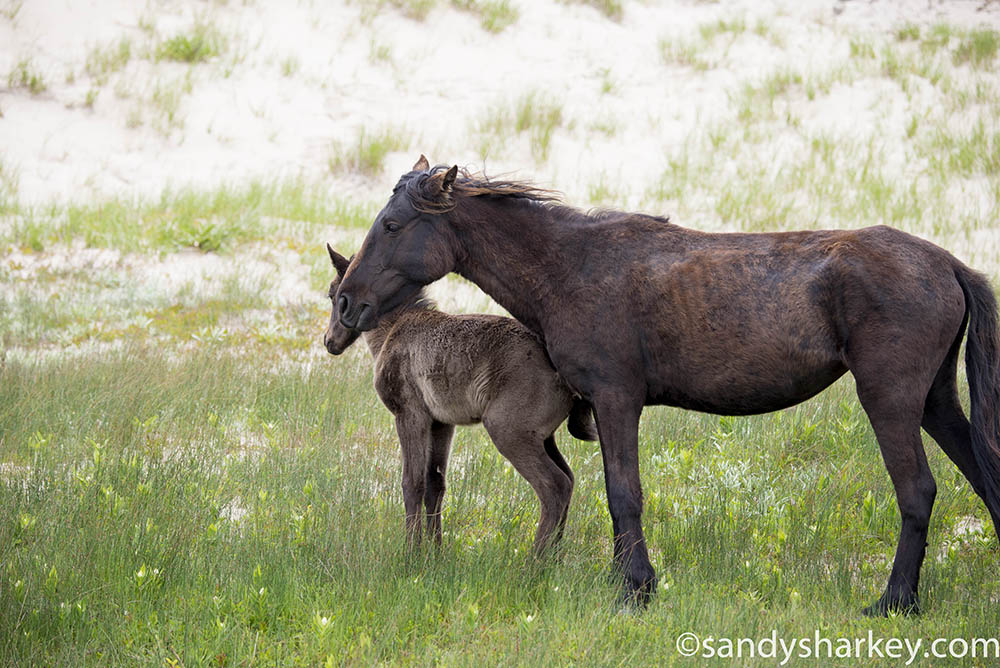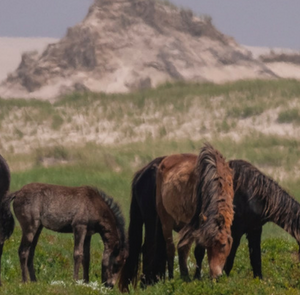Sable Island – The Graveyard of the Atlantic (Part Two)

Sandy Sharkey – Photographer
This blog is written by Women for Nature Member Sandy Sharkey.
How did the horses get there? The romantic notion is that the horses swam to the island from ships wrecked on sandbars, but today’s Sable Island horses are most likely the descendants of horses that were seized during the Acadian expulsion from Nova Scotia in the 1700’s. Acadian horses were brought to the island to help build a lifesaving station and eventually they returned to a wild state.
When the government gave Sable Island the status of ‘National Park Reserve’, many Canadians worried that the island would be overrun with tourists. I too had visions of newly built accommodations, perhaps a restaurant or two, and crowds trying to get selfies with the wild horses.
Thankfully, nothing could be further from the truth. Parks Canada’s new mandate to welcome visitors to the island while at the same time protecting the delicate environment led to an effective symbiotic relationship with Adventure Canada.
With camera gear, bottled water and hiking boots packed, it was time to set foot on Canada’s iconic Sable Island.

Grey Seal by Sandy Sharkey
From the Ocean Endeavour’s anchorage one mile from shore, we climbed into Zodiac boats and landed on the southern beach. Nearby, a large grey seal lay on its side and slowly waved a flipper at us, and we couldn’t help but smile at this lazy welcoming committee. My husband Rob and I joined a small hiking group lead by a Parks Canada guide with Adventure Canada resource photographer Mike Beedell in tow. We knew the rules: there would be limited time on the island, and we were to hike only on sand or established horse trails so as not to disturb the delicate foliage which also provided shelter for breeding birds. And, if we encountered wild horses, we needed to respect the minimum distance of sixty metres.
The wild horses appeared almost immediately. Two bachelor stallions descended from a grassy ridge to cross the beach and walk along the surf, paying us no attention whatsoever. It was a fleeting moment, the stallions turning back to the ridge, giving chase and disappearing over the hill. Freedom. Wild. Raw. Nature.
We hiked through a meadow of marram grass, a thick stemmed grass that is the primary source of food for wild horses. Ascending Bald Dune, at twenty-eight metres the highest point on the island, the view is breathtaking: a freshwater pond dotted with water lilies, a mix of bayberries and blueberries skirting horse trails, grassy ridges, a glimpse of the northern beach with hundreds of grey seals, and a family band of wild horses. Arctic Terns and Herring Gulls flew overhead and the occasional sighting of the Ipswich Sparrow was especially rewarding, as this diminutive breed of sparrow is known to breed only on Sable Island.

Wild Mare and Foal by Sandy Sharkey
We kept our distance as we approached the wild horse family band. Grazing quietly were two mares, still shedding winter coats, a yearling colt and a tiny foal who entertained us with his game of ‘peekabo’ behind his mother’s nuzzle. A magnificent stallion with a long tangled mane kept a watchful eye over his family.
We photographed the horses, the tiny flowers, the birds, the seals, the sand dunes. We stood still. We took it all in, joyous, exhilarated, alive. We were experiencing one of the most beautiful places in the world.
As we hiked back to the south beach and climbed into the waiting Zodiac, I couldn’t help but notice my footprints in the sand. And with one gust of wind, they disappeared. Zero impact by mankind. Like we were never there. Exactly as it should be.
In Canada, we host a model for nature to be envied around the world. Wild, natural. Sable Island. It is truly fitting that the island is shaped like a smile. Sable Island. It exists. Follow your dreams and visit.
To find out more about how you can get to Sable Island, email sandysharkey@rocketmail.com



